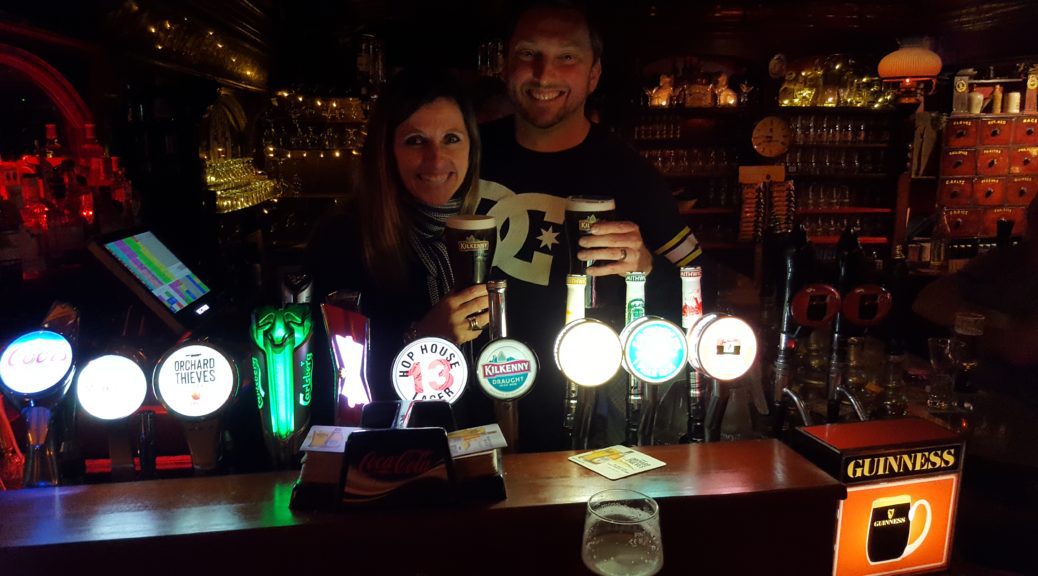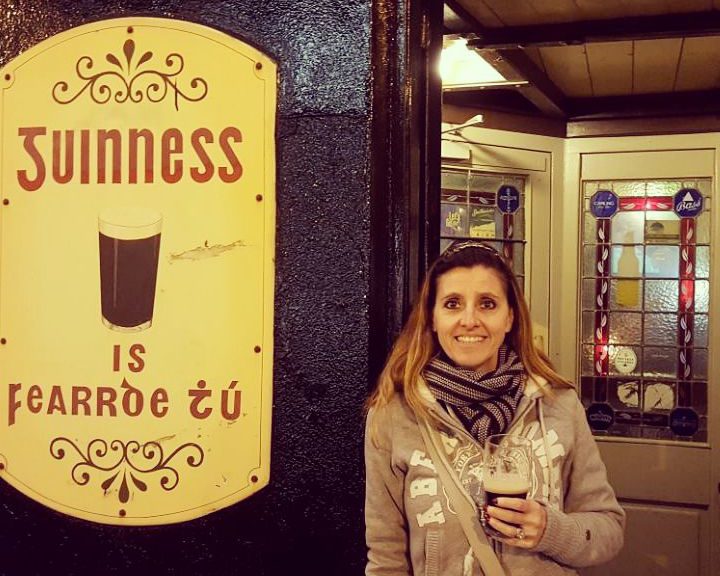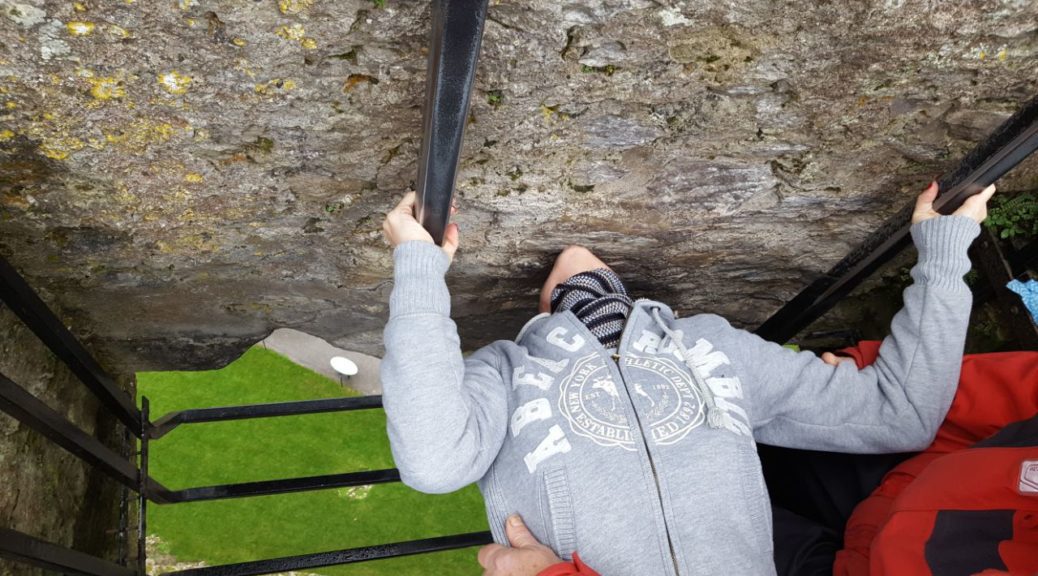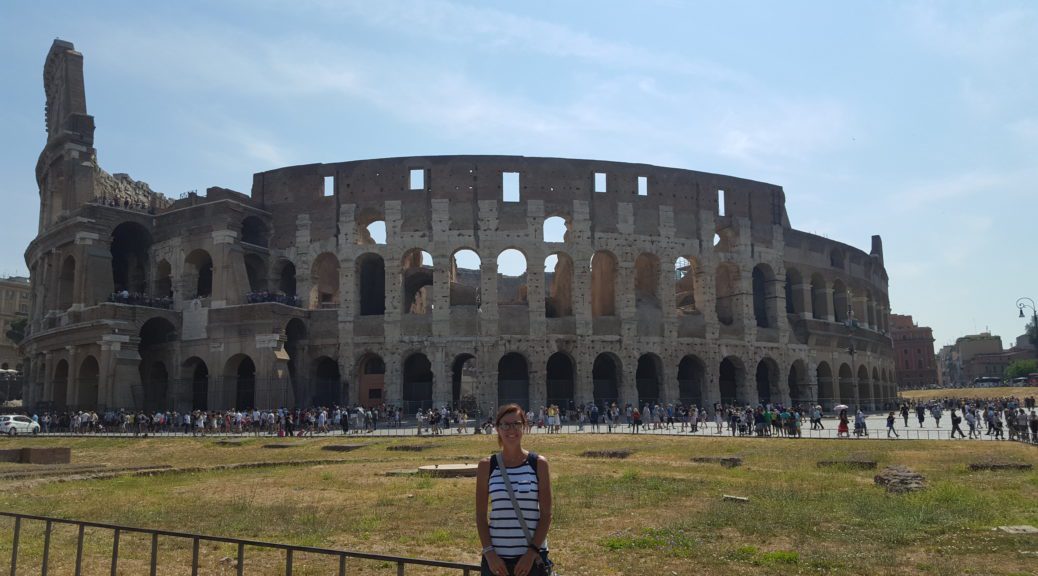KILKENNY
18-19 November 2017
We woke to a grey but dry morning in Dublin (winning!) and walked through the town to the Avis office to fetch the car we’d rented for our roadtrip.
Dublin is a very easy city to navigate (once you’ve been around it once or twice, which we had thanks to the walking tour) and the crisp morning made for a great walk in the fresh air.
We drove the car back to our hotel to collect our bags and check out, and were on the road by late morning.
We had 88km to take us to the first stop, Rock of Dunamase, which took just over an hour of easy driving on the open highway.
You couldn’t miss the Rock, as a 46m outcrop protruding sharply from the mostly flat plains of the farms surrounding it. The ruins of Dunamase Castle perched on top of the Rock made for a dramatic silhouette on the skyline, less daunting as you drive round to the entrance at the back, off a country cul de sac providing access to the Castle and its neighbour, a quaint little Church complete with creepy Cemetery.
We’d downloaded an audio guide off an Irish Heritage website which talked us through the outer gates, over where the moat would have been, through where the portcullis would have been, under the Murder Hole where the defenders would have rained boiling oil or buckets of excrement on invaders and into the inner Barbican.
The first known inhabitants of this hilltop built a fort in the early 9th century but were soon pillaged by the Vikings in 842. The Castle was only built much later in the latter half of the 12th Century and became the most important fortification in Laoise (pronounced “leash”) with the Norman invasion and then was a pawn in all sorts of wheeling and dealing until it fell into ruin by the 1350s.
After our wander, we drove the 7km to the next town, Portlaoise (“port leash”) to grab some lunch.
We parked on the edge of town and ambled along the narrow high street, window shopping and enjoying the relaxed pace.
We found a warm and cosy mom ‘n pops deli (McCormack’s) and settled into the window counter to watch the day go by as we were served our shepherd’s pie and lasagne, with chips of course.
Fed and happy, we walked the remainder of the high street. Not much was open as we’d obviously caught the town between shops that shut at lunchtime and venues that opened for evening trade, but that didn’t matter because we were moving on anyway.
We only had 48km left of our day’s journey, so were in Kilkenny less than half an hour later, checking into our very homely B&B, Chaplin’s Guesthouse.
It had started to drizzle very lightly, but that didn’t deter us since Christian had remembered to pack our ‘holi-brollies’ (procured on our Baltic Cruise holiday) so we hit the streets and headed for the Castle.
Sadly, 2 wrong turns and early winter closing time left us arriving at the Castle as it was closing so, never ones to dwell on misfortune, we went to the Smithwick’s Brewery instead.
Not up for another hour of barleyhopsroastingtoasting stories, we had a wander around and felt enriched enough to hit the ‘in the field sampling’ with a clear (and educated) conscience.
Smithwick’s is situated at the tapered end of the teardrop-shaped Medieval Mile, so named because of the visible evidence in the architecture and layout of this portion of the city that Kilkenny was once the medieval capital of Ireland.
The Mile is home to 24 attractions in its narrow streetscape as a living exhibit that has visual clues like the Butter Slip, a narrow and dark walkway that cuts the teardrop in the middle to connect the outer roads and which housed the market’s butter vendors (because it is sheltered and cold) earning its name. It also has the conventional sights – town hall, city gate, cathedral – as well as a museum and a gallery for a well-rounded experience.
We started with The Hole in The Wall, a 16th Century tavern in Ireland’s oldest surviving townhouse, earning its name from the hole punched in a wall at the rear of the house to create access from the high street. Besides the anticipated exhibits, we discovered a tiny bar in the house, a rustic tavern tucked away in a little room under the stairs, with only 11 seats, and joined the 2 existing patrons and the barman for our first Kilkenny ‘Irish Cream Ale’ draught.
Our sightseeing turned into a pub crawl – directed by the recommendations of our close company at the tiny bar – starting with Hibernia Bar, an upmarket venue diagonnally across from Kilkenny Castle.
Next was Tynans Bridge House Bar, which is the perfect local’s pub with traditional decor, casual locals clearly at home around the massive wooden bar counter, dark and comfortable corners, sing-along classic soundtrack and a larger-than-life host, Liam, who joined and rejoined our table periodically like a returning old friend, quick with a story and a laugh. If we lived in Kilkenny, this is where we would be regulars, so we stayed for a few, as if we were, and logged our pints on our Guinness Index for posterity.
We rounded off the evening with Sullivan’s Taproom, which by stark contrast was a hall-like double-volume modern venue. The pizza and local red ale had been recommended on quite a few sites we’d researched on, so our choices were easily made. The food was excellent and ambiance created by the one-man-band performers who seamlessly mixed traditional Irish with more contemporary songs, so all in all a good evening was had.
As is often the case, the walk home seemed much shorter than the walk into town in the afternoon. Likely a combination of having a better sense of where the destination was, not having the drizzle to contend with and having the series of new experiences to giddily recount.
I’m sure we missed a lot of the classic Kilkenny experience by skipping most of the buildings and whatnot… but doing it our way was a lot more fun!
… Or so I thought…
SATURDAY
Christian had gone for a run while I was doing the above Travelogue, which I assumed was finished… Until he came back with stories of how awesome the day was and all the things he’d seen on his run around the town and the Castle.
Between the animated delivery and the magnificent Full Irish breakfast, it was decided to do a quick victory lap around the Medieval Mile to fill in the gaps of what we’d missed.
We packed the car and drove down to town, parking near the Hibernian pub we’d so enjoyed the night before.
Little was open, so it was easy to navigate the streets and get pics the way I like them – “post apocalyptic”, like we’re the only people in the world.
It seemed fitting to visit the churches, being a Sunday ‘n all, but unfortunately couldn’t access the one of most interest – St Francis Abbey where beer has been brewed for centuries.
We also got in a short walk around the Castle gardens before it started to drizzle, at which point we made our way to the car to get back on track with our original plan to go to Waterford.









